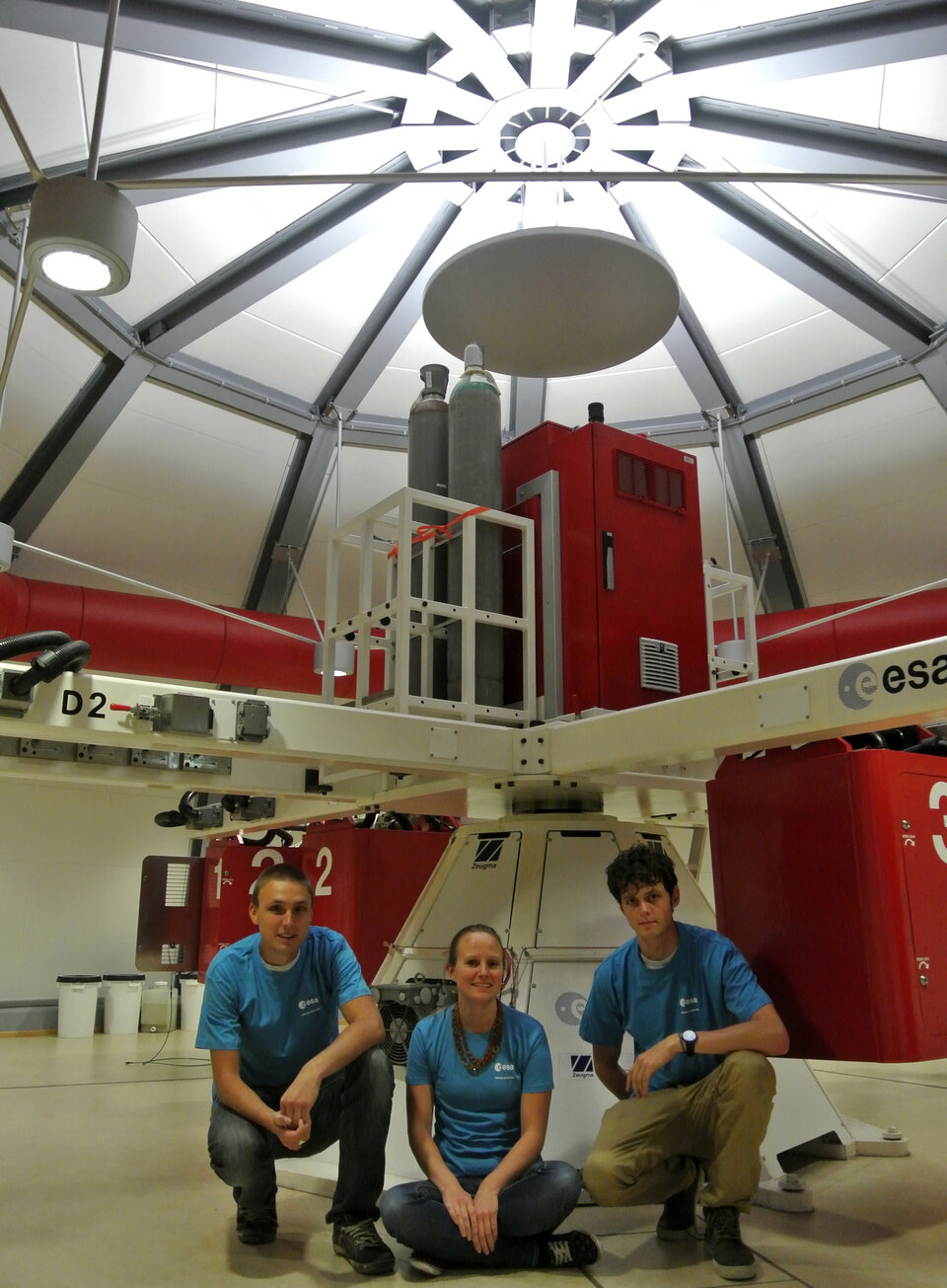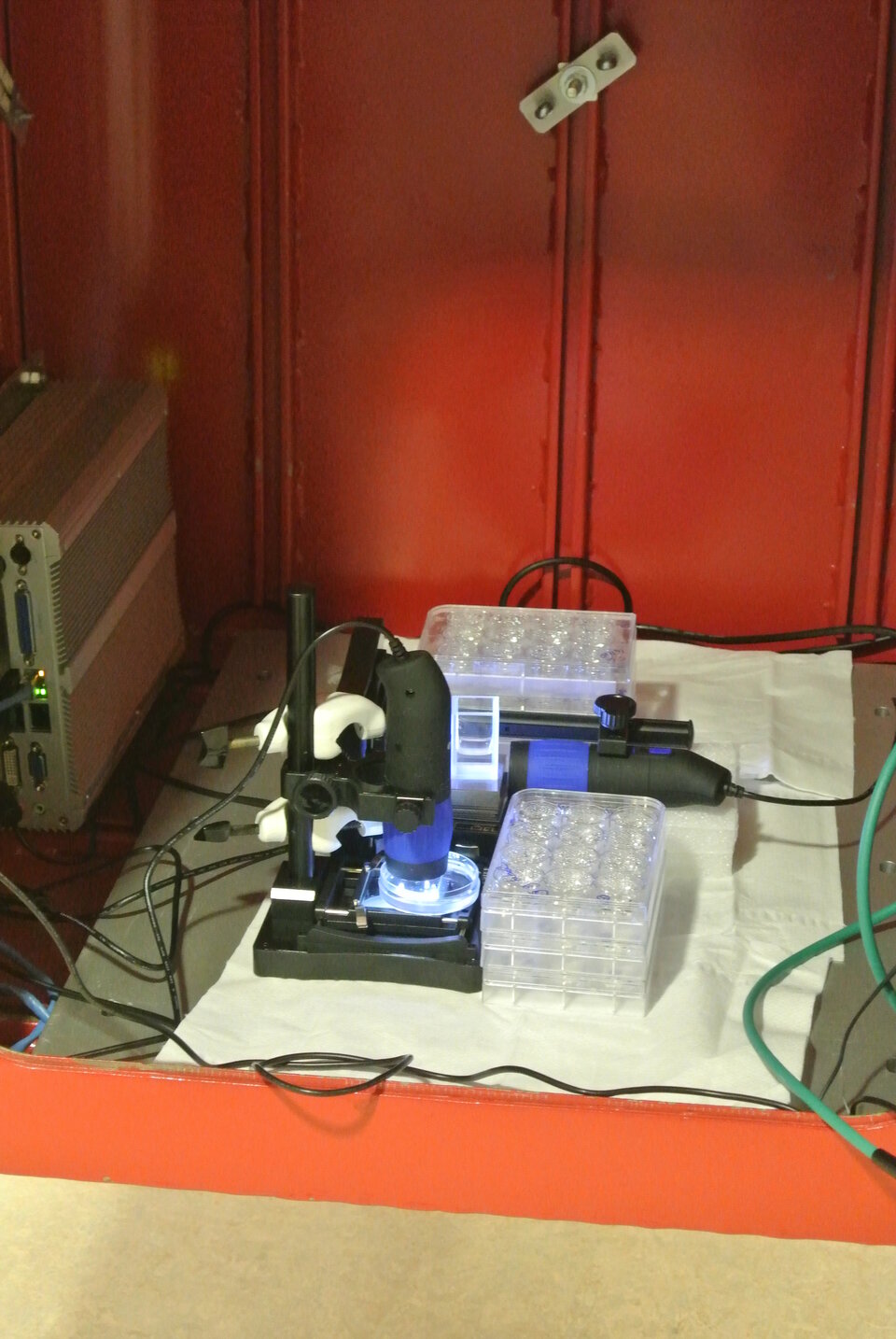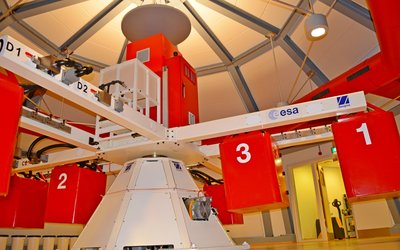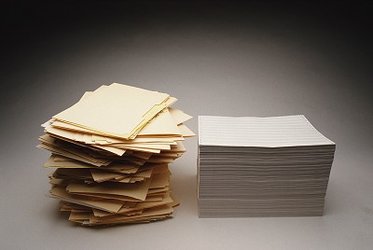Meet the teams: Sponges in Space
The Sponges in Space team is composed of two Master students and one PhD candidate from the University of Amsterdam. The team aims to study the energy demands of developing sponges by influencing the physical constraints during a specific stage of germination.
![]()
![]()
![]()
Influence of hypergravity on the developing sponges during the spicule phase of germination![]()
| University | University of Amsterdam |
| Endorsing professor |
J.M. Goeij University of Amsterdam |
| ELGRA mentor |
Jack van Loon VU University Medical Centre, Amsterdam |
| Team | Martijn Bart, Desiderius de Bakker, and Brittany Alexander |

Sponges are filter feeders with a well-developed food-uptake system, constructed of filter chambers and canals for water transport, which they use to obtain both particulate and dissolved food sources. To enable an efficient water transport and uptake of food and energy from the water, sponges organize their body shape through a skeleton made of glass (silicate) needles, the so-called spicules. Recently, it was shown for the freshwater sponge Ephydatia fluviatilis, species found in the Amsterdam canals, that these spicules, similar to poles of a tent, are not randomly scattered throughout the tissue during body development, but are set-up in a very organized manner, like setting-up a tent to create body volume.

Gemmule hatching and spicule body construction up to the moment of a fully-developed filter system is hypothesized to be a very low-cost and efficient process mediated by internally-stored energy and nutrients (similar to a yolk in developing embryos) and therefore independent of external available resources or feeding by the gemmules. Germination studies are therefore usually performed without feeding the gemmules. However, the actual energy costs of germination are unknown. It is also unknown whether sponge gemmules can obtain additional external sources of energy and nutrients, when put in environments with increasing energy demands.
During this experiment the development of the hatched gemmules during spicule body formation (day 5-7 after hatching) will be studied under increased gravity levels of 2.5, 5, 10, and 20 g using the LDC. The team will measure the surface area and volume using light microscopy and digital imaging software. Another objective is to study the differences between the non-fed versus fed (using Isotopically-enriched 13C-glucose and 15N-amino acids) hatched gemmules.
The findings could help to improve culture methods for sponges and their use in biotechnological purposes such as drug development.
Read the final experiment report here.






